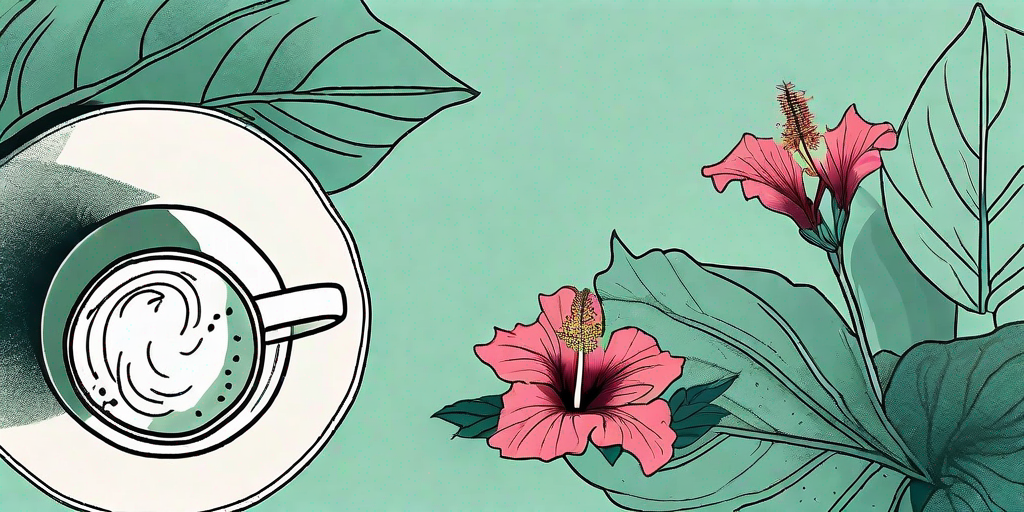
Welcome, dear reader, to the world of the Roselle plant. This cheeky little shrub, also known as Hibiscus sabdariffa, is a botanical wonder that's been tickling taste buds and intriguing minds for centuries. So, buckle up, because we're about to embark on a journey that will take us from the humble hibiscus flower to the tantalizing tea that's brewed from it.
The Roselle Plant: A Botanical Overview
Let's start with a little botany lesson. The Roselle plant belongs to the Hibiscus genus, which is part of the larger mallow family. This family also includes other familiar faces like cotton and okra. But the Roselle plant is the star of our show today, so let's give it the spotlight it deserves.
The plant itself is an annual or perennial herb or woody-based subshrub. It's a bit of a show-off, reaching heights of up to 2-2.5 meters. The leaves are a vibrant green, and the flowers, oh the flowers! They're a stunning shade of yellow with a dark red center. But the real magic happens when these flowers mature into the calyces (the part of the flower that encloses the petals and forms a protective layer around the bud). These calyces are the main ingredient in the delicious Roselle tea we'll be discussing later.
The Origin and Distribution of the Roselle Plant
Now, let's take a step back in time. The Roselle plant is believed to have originated in West Africa, specifically in present-day Sudan. From there, it spread across the world, carried by traders and explorers who were captivated by its beauty and taste.
Today, the plant is grown in many tropical and subtropical regions, including Central and South America, the Caribbean, Africa, and Asia. It's a bit of a globetrotter, wouldn't you say?
The Culinary Uses of the Roselle Plant
Now that we've covered the basics, let's dive into the fun stuff: the culinary uses of the Roselle plant. And let me tell you, this plant is not just a pretty face. It's a veritable culinary powerhouse, used in everything from teas and jams to sauces and salads.
But the star of the show, the pièce de résistance, if you will, is the Roselle tea. This ruby-red beverage is a delight for the senses, with a taste that's a perfect balance of tart and sweet. And the best part? It's incredibly easy to make at home. But we'll get to that in a bit.
Other Culinary Uses
Aside from tea, the Roselle plant is used in a variety of dishes around the world. In the Caribbean, for example, the calyces are used to make a popular Christmas drink called Sorrel. In West Africa, they're used to make a tangy sauce that's served with fish and rice. And in Mexico, they're used to make a refreshing agua fresca.
But the culinary uses of the Roselle plant don't stop there. The leaves are also edible and are often used in salads or cooked as a vegetable. The seeds can be roasted and ground into a flour that's used in baking. Truly, this is a plant that keeps on giving.
How to Brew Roselle Tea at Home
Now, let's get down to business. How do you brew Roselle tea at home? Well, dear reader, it's as easy as one, two, tea! Here's a simple step-by-step guide:
- Start by harvesting the calyces. You'll want to wait until they're fully mature, which is usually when they're a deep, vibrant red.
- Next, remove the seed pods from the calyces. This is a bit tedious, but trust me, it's worth it.
- Now, rinse the calyces thoroughly and place them in a pot of boiling water. Let them simmer for about 20-30 minutes.
- Once the tea is a deep red color, remove it from the heat and let it cool. You can sweeten it with sugar or honey if you like.
- And voila! You've just brewed your own Roselle tea. Enjoy it hot or cold, whichever tickles your fancy.
And there you have it, folks. From hibiscus to tea, the journey of the Roselle plant is truly a wonder to behold. So the next time you're sipping on a cup of Roselle tea, take a moment to appreciate the journey it's been on. From a humble hibiscus flower to a tantalizing tea, it's a journey that's as rich and vibrant as the tea itself.
Frequently Asked Questions
Can I grow Roselle plants at home?
Absolutely! If you live in a tropical or subtropical region, you can easily grow Roselle plants in your backyard. They prefer well-drained soil and plenty of sunlight. Just remember to water them regularly, and you'll have your own supply of Roselle calyces in no time.
Is Roselle tea good for health?
Yes, indeed! Roselle tea is packed with antioxidants and vitamin C, which can boost your immune system and help fight off illnesses. It's also been known to help lower blood pressure and cholesterol levels. But as always, moderation is key. Too much of anything, even something as delicious as Roselle tea, can be harmful.
Can I use Roselle tea in cooking?
Why not? Roselle tea can add a unique flavor to a variety of dishes. Try using it as a base for soups or stews, or as a marinade for meats. The possibilities are endless!
Well, that's all for now, folks. I hope you've enjoyed this journey from hibiscus to tea as much as I have. Until next time, happy brewing!















